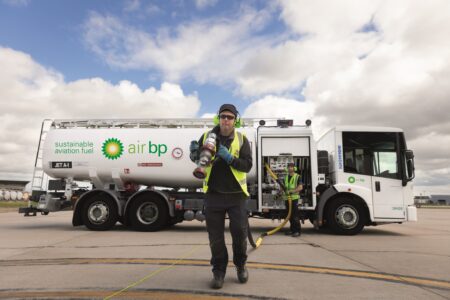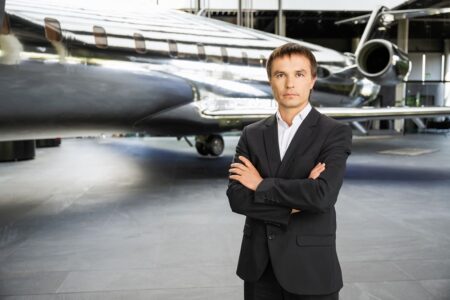The return trip from this year’s NBAA-BACE event in Las Vegas was a bleary-eyed affair for most attendees, while offering a chance to reflect on the most important news and trends affecting the business aviation sector.
There was the typical slew of new aircraft, infrastructure and services announcements made at the show, the industry’s biggest event. The show’s organizers, the National Business Aviation Association (NBAA), did well to use the four-day show to depict the business aviation sector as a dynamic one in charge of its own destiny.
The NBAA promoted several major themes via keynotes and large amounts of exhibition space, such as urban air mobility, sustainability, digitization and the importance of improving the image of the sector. The event showed an industry aware of its criticisms – accusations of being elitist and ignorant of its environmental impact – but which is working to answer those criticisms to ensure it survives and thrives far into the future.
Urban Air Mobility
The most prevalent theme of the show was the idea that business aviation has to embrace eVTOL (electric Vertical Take Off and Landing) aircraft in the future. Head of Uber Elevate, Eric Allison, who spoke at NBAA-BACE 2018, returned with a keynote that outlined the company’s approach to bringing personalized aviation services to a wider customer base in a more substantial way.
Since last year, the company has launched its Uber Copter service in the form of an eight-minute helicopter route between Lower Manhattan and JFK. The company has also signed an agreement with Signature Flight support, to help develop the ground-level infrastructure for its Uber Air service, which it plans to launch in 2023.
Several of the eVTOL aircraft being developed for Uber Air made up a substantial presence on the show floor near the main keynote area and drew a lot of attention from attendees.

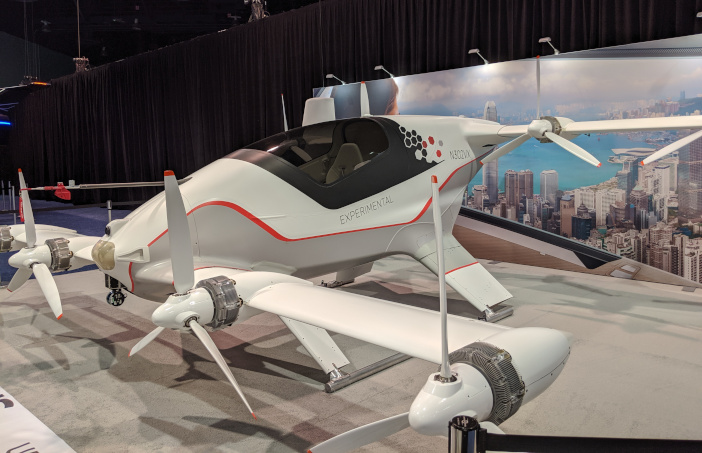
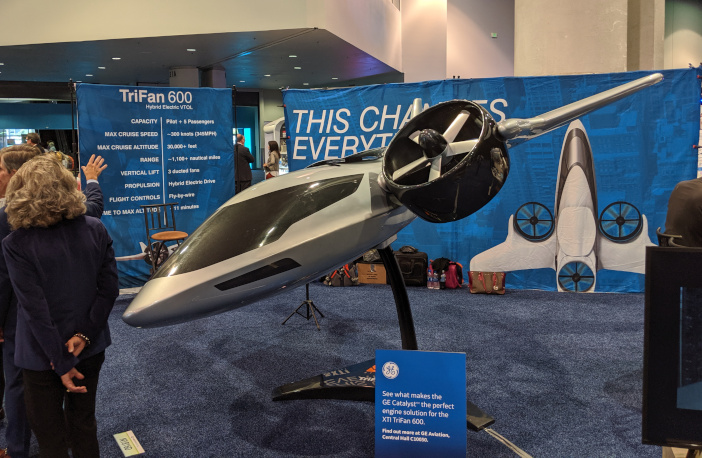
Uber’s vision proposes to change business aviation by reducing the cost of personalized, on-demand air travel. The company is wants to achieve this by using a concept that most in the industry will already be familiar with – ride sharing.
However, Allison was surprisingly humble in his keynote, stating that Uber still has a lot to learn about operating in airspace instead of on the road.
Interestingly, an area Allison highlighted as vital to the success of Uber Air during his keynote is an area business aviation providers already specialize in – ensuring that the transfer from car to helicopter is as quick and easy as possible for the passenger.
G700 and other new aircraft
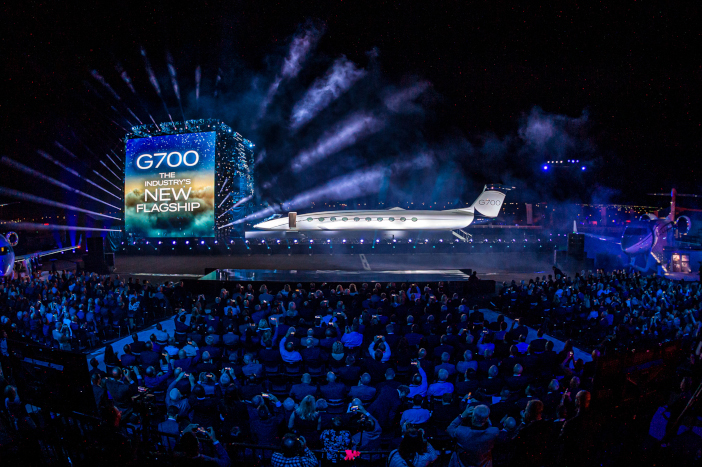
Elsewhere business jet-makers didn’t disappoint with the current generation of aircraft, with Gulfstream revealing the G700 for the first time. The stunning-looking aircraft has the largest cabin in its class and a range of 13,890km at Mach 0.85 or 11,853km at Mach 0.90.
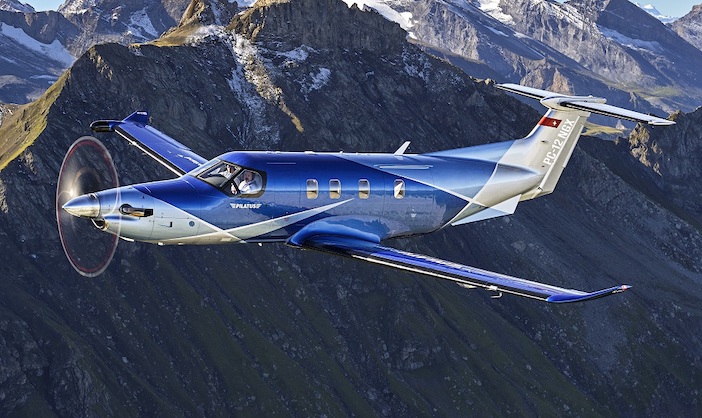
In the general aviation market Pilatus revealed its PC-12 NGX single-engined turboprop, which is powered by the new Pratt & Whitney PT6E -67XP and features a Full Authority Digital Engine Control (FADEC), a first for an aircraft of this type. The aircraft features advanced avionics, reduced in-cabin noise and larger windows alongside a top speed of 537km/h and a range of 3,269km. By the end of the show the company had announced several orders for the aircraft.
Airports and FBOs
Meanwhile at ground level a number of important announcements were made. Jet Aviation, used the show to promote the recent opening of its 40,000 square foot hangar and FBO at Teterboro, New York. It also announced that construction of its new 10,000 square foot terminal and 43,000 square foot hangar at Van Nuys in Los Angeles is on schedule for completion before the end of this year.
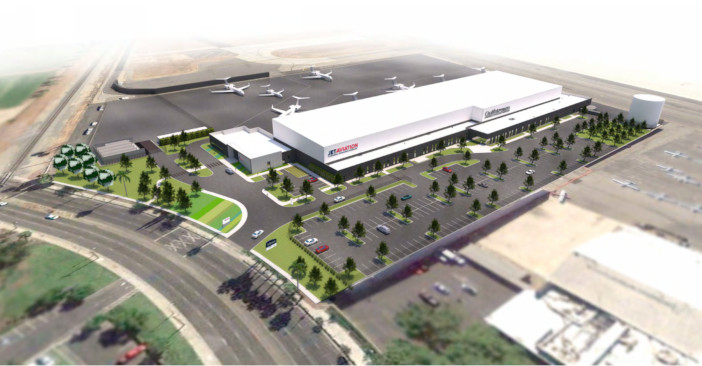
Meanwhile FBO-chain Million Air announced the winner of its FBO of the year at the show as Syracuse – for its commitment to the brand’s standards in terms of appearance, service, training, safety and fueling standards.
Other airports and FBOs reported increases in traffic, including SEA Prime. The Italian-FBO operator said movements at Milan Malpensa had increased by 240% since opening its new Milano Prime business and general aviation terminal at the airport in July compared to the same period in 2018.
London’s Biggin Hill airport announced that its intercontinental traffic had increased by 20% in the last year, despite an 8% fall in the London market during the same period. The airport cited new infrastructure, including a new hangar and Bombardier MRO, as aiding growth.
During NBAA-BACE 2019 FBO-chain Signature Flight Support “reaffirmed” its commitment to two of its brands, Signature Select and EPIC fuels, by restructuring their management teams. Owen Busch has been appointed senior vice president of sales for EPIC Fuels and Ben Johnson as director of signature select in a move to extend the reach of the FBO-chain, already the sector’s largest, even further.
Digitization
Staying within the theme of enabling future urban air mobility, FBO-chain Sheltair, which operates the helicopter landing sites at New York’s JFK and LaGuardia airports, announced a partnership with Blade, the largest arranger of helicopter flights for civilian travel in the USA. The two companies are to work together on how to provide the “digital backbone” for future urban air mobility vehicles in New York.

Further evidence of digitization was in evidence with AEG Fuels, which released their virtual fuel card, a mobile app to search for, quote, authorize and complete fuel transactions. A shift to digital was also apparent with companies such as Webmanuals, which reported a 17% increase in its client base in the USA at NBAA-BACE 2019. The company, which also announced an update to its software at the show, provides a unified environment for aviation documents which automatically updates across different devices while ensuring regulatory compliance.
Sustainability and image

Away from the buzz of urban air mobility the NBAA and industry partners continued to push the theme of sustainability, where the message during a panel discussion on the final day of the show was that sustainable aviation fuel (SAF) is available, reduces emissions and can improve aircraft performance. Similarly to EBACE earlier this year, the viability of the fuel was demonstrated by a “fly-in”, where display aircraft arrived at the show fueled entirely or in part with SAF taken on at the nearby Henderson Executive Airport. Major suppliers, such as Air BP, also continued to back SAF.
The NBAA has around 11,000 members – the USA is the largest and most developed business aviation sector in the world. Creating a more sustainable future for business aviation doesn’t just take fuel, it also requires human resources. Laudably, the organization seems to understand that and spent a lot of time at the conference celebrating role models, such as Barrington Irvine and others on its “Top 40 Under 40”. Most on the last day seemed to leave satisfied with the show, with one eye on the banner announcing its dates at Orlando, Florida in October 2020.




